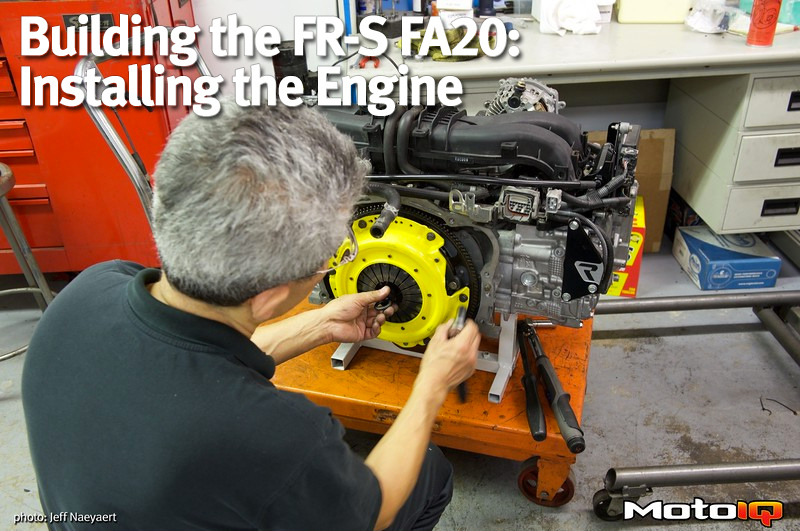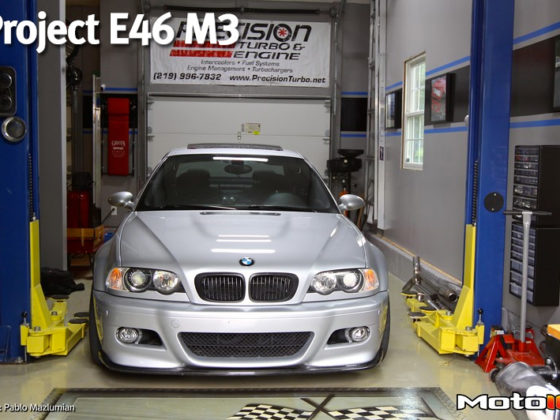
Building the FR-S FA20 with Stay Crushing: Installing the Engine and Making Big Power!
If you have been following our story, we are now ready to install the engine in the chassis. Our engine has been built for durability with forced induction, and it was time to put it in the chassis to get it tuned!
Read Part one of our FA20 Engine Build!
Check out Part two of our build here!
Part 3 of our build is here!

In testing, the ACT clutch can hold 345 lb/ft of torque. The pressure plate cover is a heavy-duty stamping that is stiffer, which effectively increases clamping force and release precision. The pressure ring used in the ACT pressure plate is made of tough ductile iron, which has good high-temperature properties and frictional characteristics as well as abrasion resistance. The pressure ring is held onto the cover with doubled up straps. It’s amazing that these thin straps hold all of the engine’s torque, but they do, and the ACT has twice as many as stock!
The diaphragm spring is 4 stage heat treated and thicker to increase the clamping pressure, but the fulcrum for the diaphragm spring is relocated on the pressure ring to keep the pedal pressure and the engagement travel very streetable.

You can see in this picture that the ACT hub has much stiffer springs than stock. This prevents hard bottoming out and keeps the hub from pounding apart. The center hub and spring retainer is a troublesome area on the stock clutch disc that often breaks, and ACT beefs it up using thicker material.
The sprung hub also helps reduce shock loads on the transmission, and in the case of the FR-S, the transmission is marginally strong for the amount of anticipated power that we will be putting out with our new engine.

ACT flywheels are one piece and are CNC-machined from chromoly forgings. Chromoly is a steel alloy with a high chromium and molybdenum content. This makes a steel alloy with nearly twice the tensile strength per weight as regular high carbon steel.
Forging orients the metal’s grain for best strength. It also works the metal and refines the grain which gives additional strength. The ACT Prolite flywheel has a lot of milling to reduce weight.
The flywheel’s lightening holes are largely milled out around the flywheel’s perimeter to reduce its moment of inertia. This one piece construction is pretty cool! The starter ring gear teeth are induction hardened for longer life. The flywheel is also resurfaceable.




